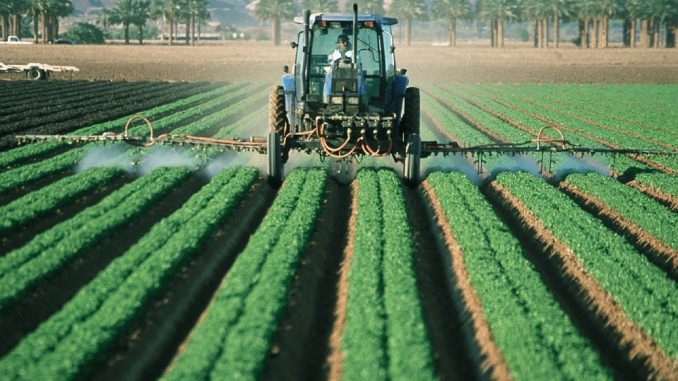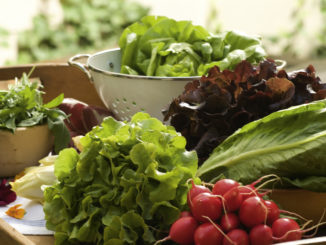
By Robert Levesque (AGTER), Tanguy Martin (Terre de Liens) and Véronique Rioufol (Terre de Liens)
With farms increasingly forced to go big or go broke, corporate interests are stepping in to shape agriculture. More transparency, participative decision-making, and CAP reform are among the tools that can be leveraged to combat the scourge of financialisation, write Robert Levesque, Tanguy Martin and Véronique Rioufol.
The financialisation of agriculture is a process which is part of the history of capitalism and is characterised by an influx of external capital with the aim of making a financial profit. It began with the development of colonial plantations (sugar cane, tea, rubber trees, etc.) and has expanded in recent years, with an acceleration starting between 2007 – 2008. This financialisation is transforming the agricultural sector, which in many countries was structured around family and/or peasant farming. In the peasant farming model, the owners of business capital are also the main workers; the wealth produced is used to pay for work done and to make productive investments in the farm. This is a very different attitude to that of external investors in farms, who seek the highest possible return on investment.
The “modernisation” of agriculture began in the 1960s in many European countries and took the form of specialisation, simplification and standardisation of production, increased mechanisation and automation, and expansion of certain farms alongside the disappearance of the smallest. Production facilities (machines, land, inputs) have become ever larger and more expensive, to the point that farmers are forced to rely on credit. When the situation spirals out of control, it can take more than the full duration of a career in agriculture to pay off debts. If production is to be maintained, it must therefore be propelled by an economic entity that “outlasts” a human career, which explains the rise of farm corporations. To continue to finance operating costs, these corporations require external capital.
In the current phase of financialisation of agriculture, more and more large farms are adopting the status of corporation in order to attract external capital. Their capital may be fully or partially financed by external investors and sold in the form of company shares. External investors’ motivations may be the need to secure the supply of food or biomass, and/or the diversification of their financial portfolio. Some are agricultural actors (agribusinesses, land-owning companies), others are non-agricultural, such as investment funds or insurance companies. When they acquire shares, investors prioritise profitability, relegating agricultural production together with its social functions (food, rural life, landscape) and environmental objectives (biodiversity, climate, water, health) to second place.
The financialisation of agriculture in Europe is currently poorly understood. There are no studies or systematic data on this phenomenon at European level. There are, however, a number of national studies which highlight the acceleration of land buying by corporations and the rise of buying shares in farm corporations, including by non-agricultural actors. In 2018, sales of shares in farm corporations in France accounted for the transfer of 185,000 hectares – almost the total number of hectares of agricultural land sold (200,000 hectares).

What are the consequences of the financialisation of agriculture?
There are many important consequences of this financialisation:
• It creates a lack of transparency of land ownership and production units.
When land or farms fall into the hands of corporations, it is difficult to work out which natural or legal person actually owns them. Financial arrangements can be created to enable a single corporation or person to own vast expanses of land or a great number of production units. This also makes it difficult to know when shares (representing land) in the corporation are sold, and under what conditions – and these sales completely by-pass local farmers.
However, the implementation of the European Directive on Money Laundering which obliges all Member States to keep a list of natural persons who own shares in corporations shows that it should be possible to identify which natural persons own certain agricultural shares or farm corporations.
• It makes it possible to circumvent existing regulations.
These regulations were designed to apply to natural persons who own or rent land, including the law on real estate transactions (Grundstückverkhersgesetz) in Germany and SAFER regulations in France. Purchase of shares also allows certain forms of tax avoidance.
• It undermines farmers’ independence
Farmers become dependent on external financial injections, and particularly on investments from non-agricultural operators, which take the approach of maximising short-term profit. This fuels the race towards expansion, specialisation and capitalisation of agriculture, as well as compromising food security, environmental protection and peasant agriculture systems.
• It impedes the generational transition
It clearly removes land from local markets where it is sold with accessible conditions and pricing for current or future farmers. Certain highly capitalised farms have become too capital-heavy to be sold on without the intervention of external investors.
• It fosters the development of farm corporations operating solely on the basis of salaried work
In this situation, an ever-greater share of the wealth produced is skimmed off by investors who are increasingly further from the site of production. Agriculture works for the upstream industries – creating an even stronger dependence of the agricultural sector on the industrial and financial sectors. This leads to a higher dependency of the farming sector and the impoverishment of rural areas.
How can we combat the financialisation of land sales?
At a national and European level, political and civil society representatives are concerned by the rise of financialisation. Several key measures could be used to contain it:
● Impose a transparency obligation on companies to ensure it is possible to ascertain which natural person owns agricultural land or production units. This would make it possible to enforce ceilings for the number of hectares owned or farmed by the same farmer or landowner. One prerequisite would be the creation of a land registry and register of farm corporations. Another prerequisite would be to receive support from the European Commission to obtain information on all land and farm corporation shares held by any one person across the whole of the EU.
● Set up authorisation systems for transactions involving agricultural land and shares in land companies or farm corporations, as recommended by the Commission. This is based on the obligation to notify a land agency (or administration) of all planned transfers of agricultural property or shares, which can then be approved or refused.
● Establish a participative decision-making process within these land agencies involving the State, local authorities, agricultural trade unions, and civil society (environmental organisations, local users, consumers) to manage the authorisation and refusal of proposed transfers of property or company shares.
● Allow land agencies to pre-empt the sale of agricultural properties and company shares to prioritise sustainable agricultural usages.
● Give land agencies the power to implement land storage policies to avoid the expansion of farms and give precedence to certain types of land use: peasant farming, public land companies or non-profits. They should be able to do this even when no buyer is identified at the time of sale, with the aim of avoiding land concentration.
● Reform the Common Agricultural Policy in order to:
○ Pay direct subsidies to farmers, not to farm corporations whose capital belongs to non-agricultural investors, in line with the aim of the Common Agricultural Policy that aims to guarantee fair living standards for the agricultural population, particularly through raising individual income for those working in agriculture (article 39 of the Treaty on the Functioning of the European Union).
○ Pay direct subsidies in proportion to the number of individuals working on an agricultural holding, not in proportion to the number of hectares of a farm. The current system of subsidies per hectare encourages the establishment of large production entities that simplify production practices, and thus attract financial investment. This feeds into the trend of over-exploitation of natural resources and destruction of rural and agricultural jobs.
This is an excerpt from Chapter 2 of the handbook “Your Land, My Land, Our Land: Grassroots Strategies to Preserve Farmland and Access to Land for Peasant Farming and Agroecology”, published by Nyéléni Europe and Central Asia platform for Food Sovereignty.
The handbook is available in English, French and Spanish
The authors of this excerpt are Robert Levesque (AGTER), Tanguy Martin and Véronique Rioufol (Terre de Liens)
More on Access to Land
Comprehensive Tool Kit for Agroecological Land Access Launched
‘Too good to be true’ – The UK Co-op Helping New Entrants Get Access to Land
Rural Dialogues | Intergenerational Collaboration in the Vineyards of Southern France




